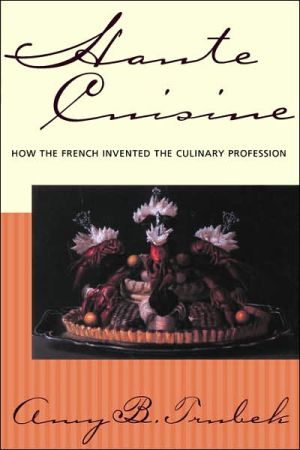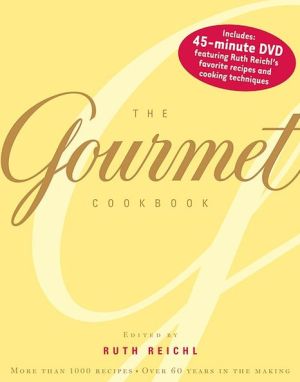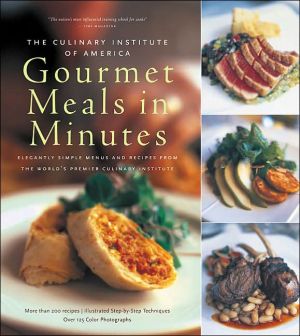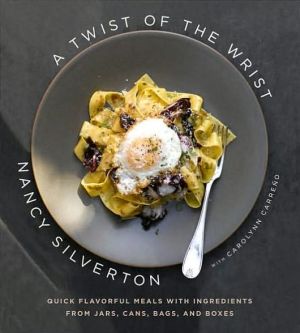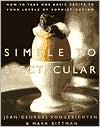Haute Cuisine: How the French Invented the Culinary Profession
"Paris is the culinary centre of the world. All the great missionaries of good cookery have gone forth from it, and its cuisine was, is, and ever will be the supreme expression of one of the greatest arts of the world," observed the English author of The Gourmet Guide to Europe in 1903. Even today, a sophisticated meal, expertly prepared and elegantly served, must almost by definition be French.\ For a century and a half, fine dining the world over has meant French dishes and, above all,...
Search in google:
Haute Cuisine shows us how our tastes, desires, and history come together at a common table of appreciation for the French empire of food. Bon appetit! Library Journal Trubek, an instructor at the New England Culinary Institute who has a background in anthropology, has given us an interesting account of the French contribution to the development of the culinary profession. Food and its preparation are examined both as cultural symbols and as means for creating social distinctions. The discussion focuses on French cuisine from 1870 to 1910, although events as far back as the 11th century are also recounted. The author addresses a variety of topics, including whether cooking is a trade or a profession, the role of schools and expositions, and the emergence of the restaurant. A brief glossary of culinary terms and a few illustrative recipes are featured, and there is an extensive section of resource notes. Recommended for large academic libraries and specialized culinary collections.--Mary A. Martin-Russell, New Hampshire State Lib., Concord Copyright 2000 Cahners Business Information.\\
\ From the Publisher"Trubek sees the world the way cooks do."—Adam Gopnik, The New Yorker\ "A fine survey of French food and culture."—Bookwatch\ "An impeccably researched history and reference for the cooking student and scholar."—Kirkus Reviews\ \ \ \ \ \ Library JournalTrubek, an instructor at the New England Culinary Institute who has a background in anthropology, has given us an interesting account of the French contribution to the development of the culinary profession. Food and its preparation are examined both as cultural symbols and as means for creating social distinctions. The discussion focuses on French cuisine from 1870 to 1910, although events as far back as the 11th century are also recounted. The author addresses a variety of topics, including whether cooking is a trade or a profession, the role of schools and expositions, and the emergence of the restaurant. A brief glossary of culinary terms and a few illustrative recipes are featured, and there is an extensive section of resource notes. Recommended for large academic libraries and specialized culinary collections.--Mary A. Martin-Russell, New Hampshire State Lib., Concord Copyright 2000 Cahners Business Information.\\\ \ \ Internet Book WatchHow did the French invent the culinary profession and rise to culinary heights? Haute Cuisine: How The French Invented The Culinary Profession charts the history of French cooking and French chefs, providing reviews of the pioneers of the field and their achievements. A fine survey of French food and culture, and how it influenced the world.\ —Internet Book Watch\ \ \ \ \ Kirkus ReviewsTrubek's slim overview of the French influence on culinary history suffers from the dry rhetoric of academese. Trubek dully and straightforwardly examines the development of the culinary profession from the Middle Ages to the late-19th and early-20th centuries. Her basic unarguable premise is that "haute cuisine equals professional cuisine." What began during medieval courtly feasts as social displays moved into chateaux, manor houses, and noble households before becoming (at around 1830) more widely consumer-oriented—in hotels, private clubs, and restaurants. Too often the text reads like an introductory course description. Sub-divisions of chapters discuss stocks, sauces, knife skills, cooking methods, pastry; "public dining in France during the Nineteenth Century"; a "definition of the bourgeoisie"; the "rigid and extremely hierarchical division of labor" between artisan and professional chefs; an overview of "associations and journals"; a plea for "professional rules." Unfortunately, very little of this is done with seasoning or panache. End-heavy with scholarly appendices (common French culinary terms; a few bland recipes), notes, and bibliography, the book could have benefited from more substantial recipes. A slow-to-boil (if impeccably researched) history and reference source for the cooking student and scholar.\ \
